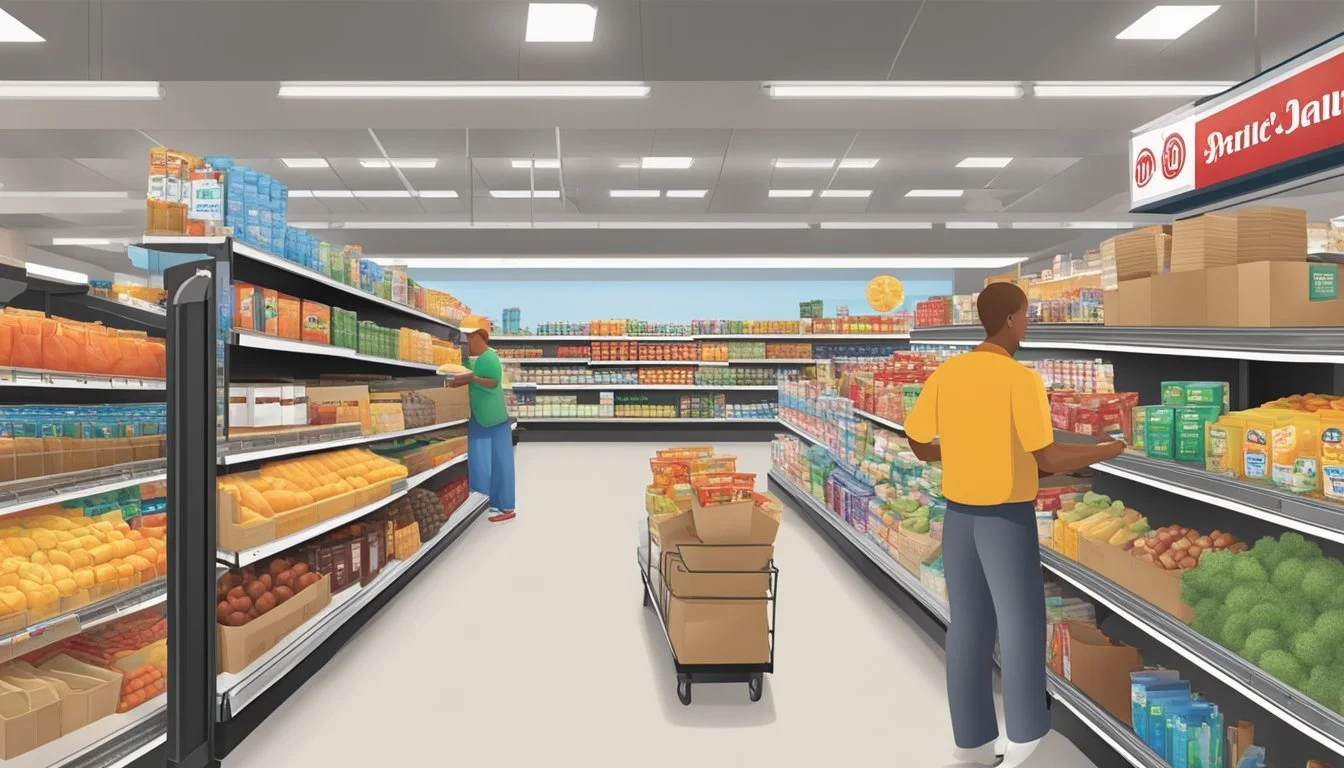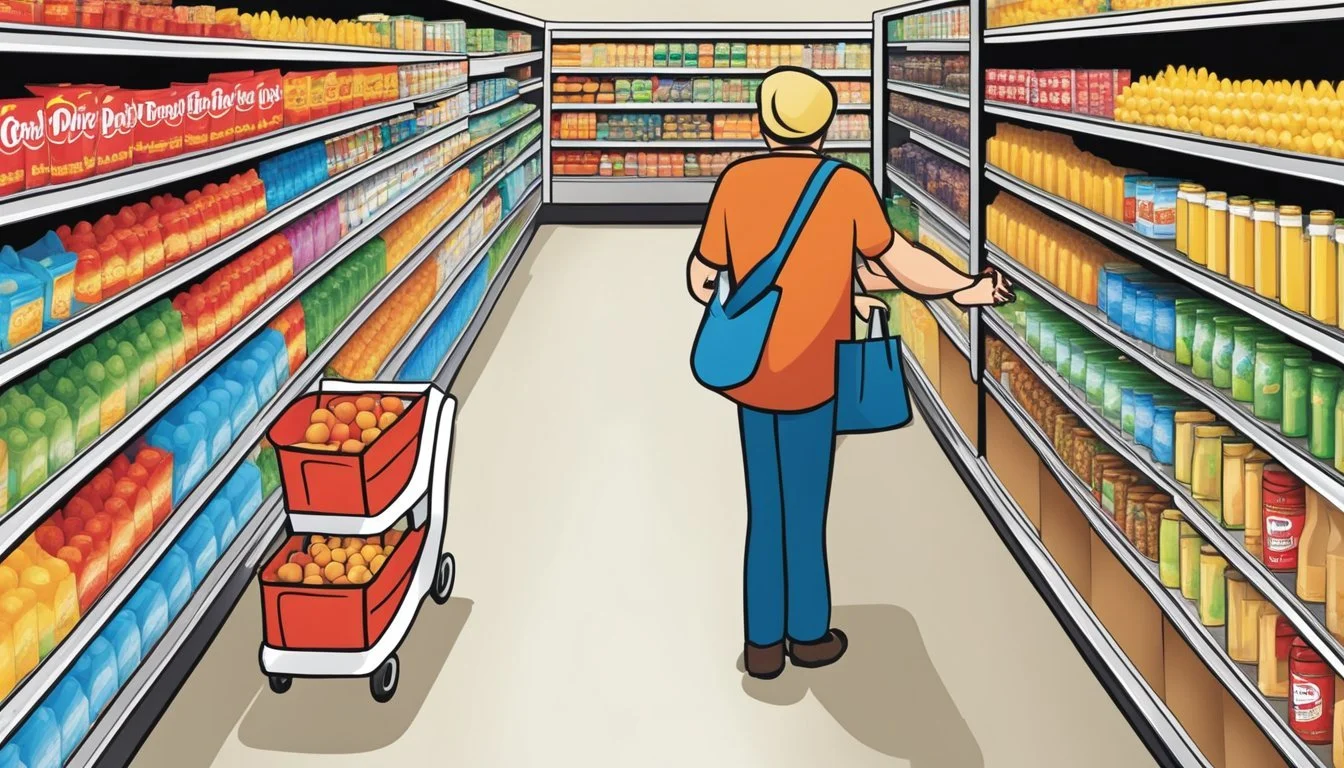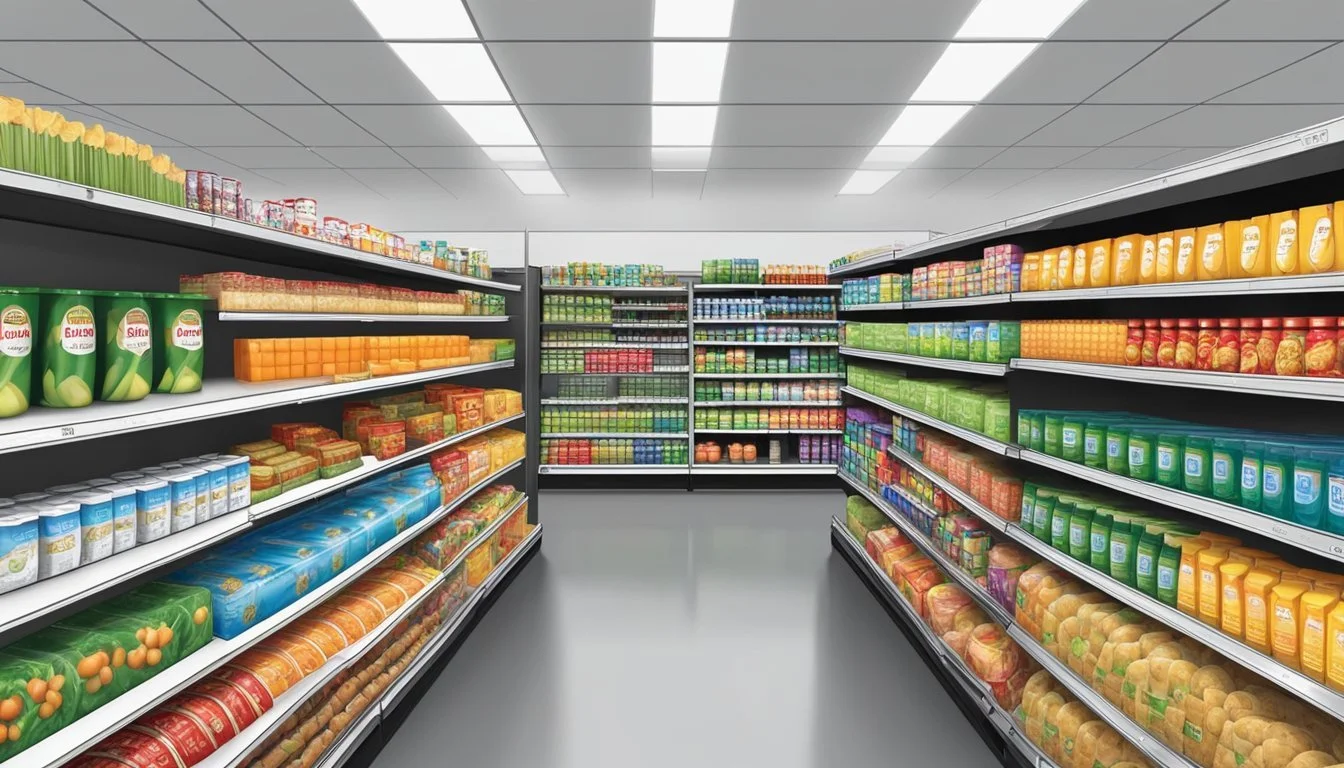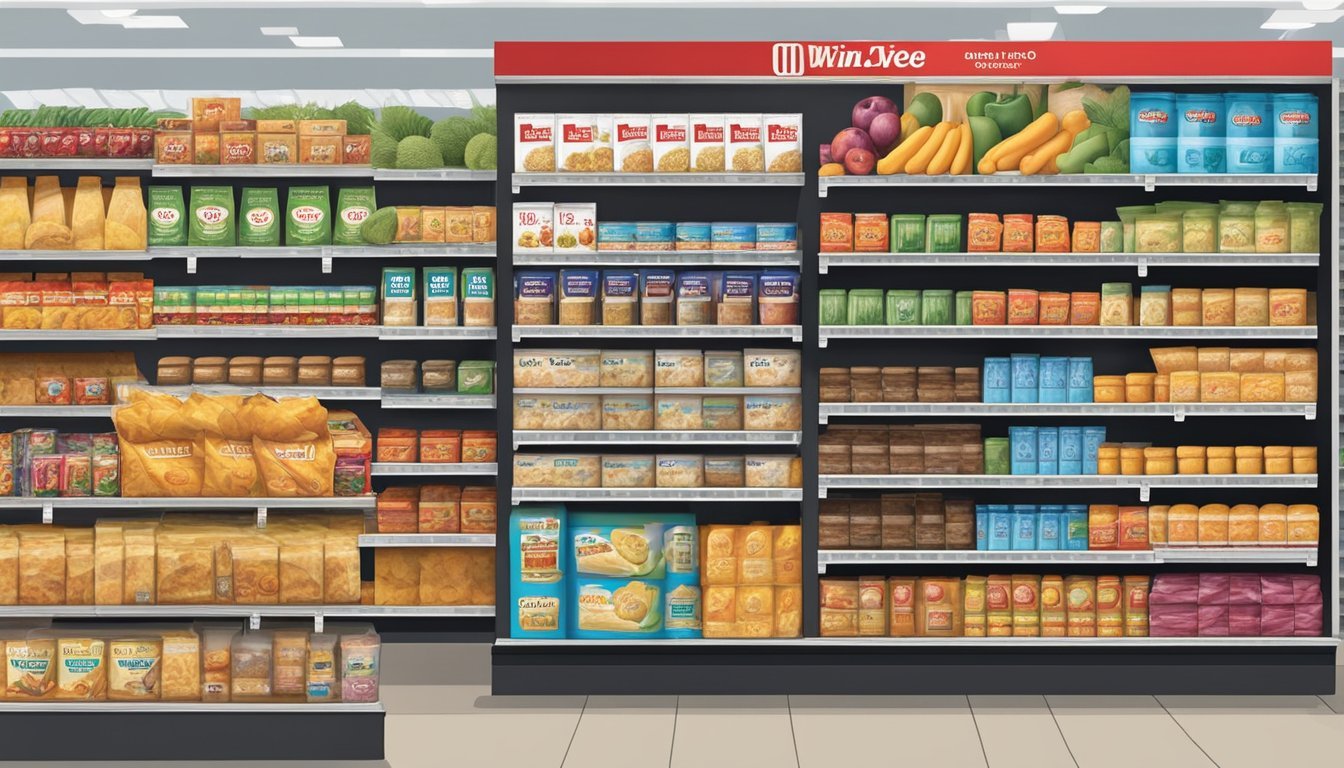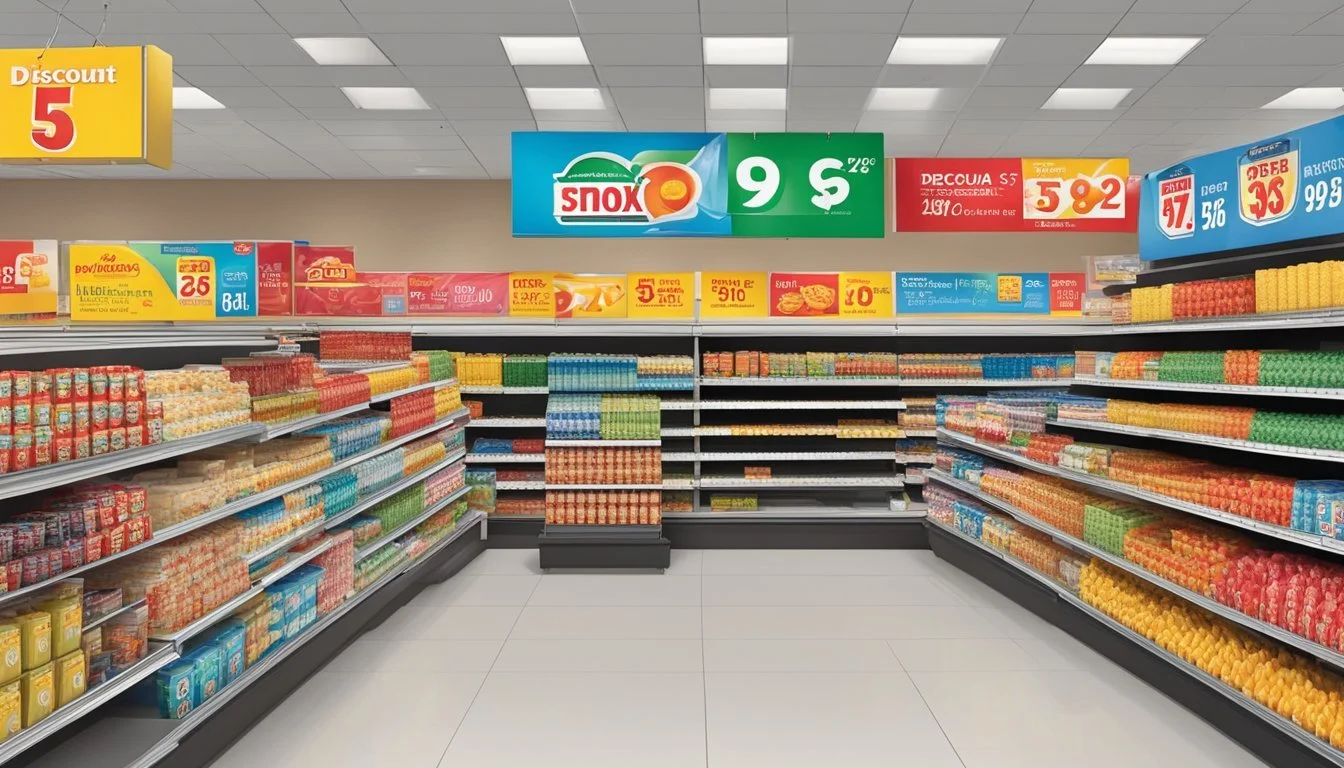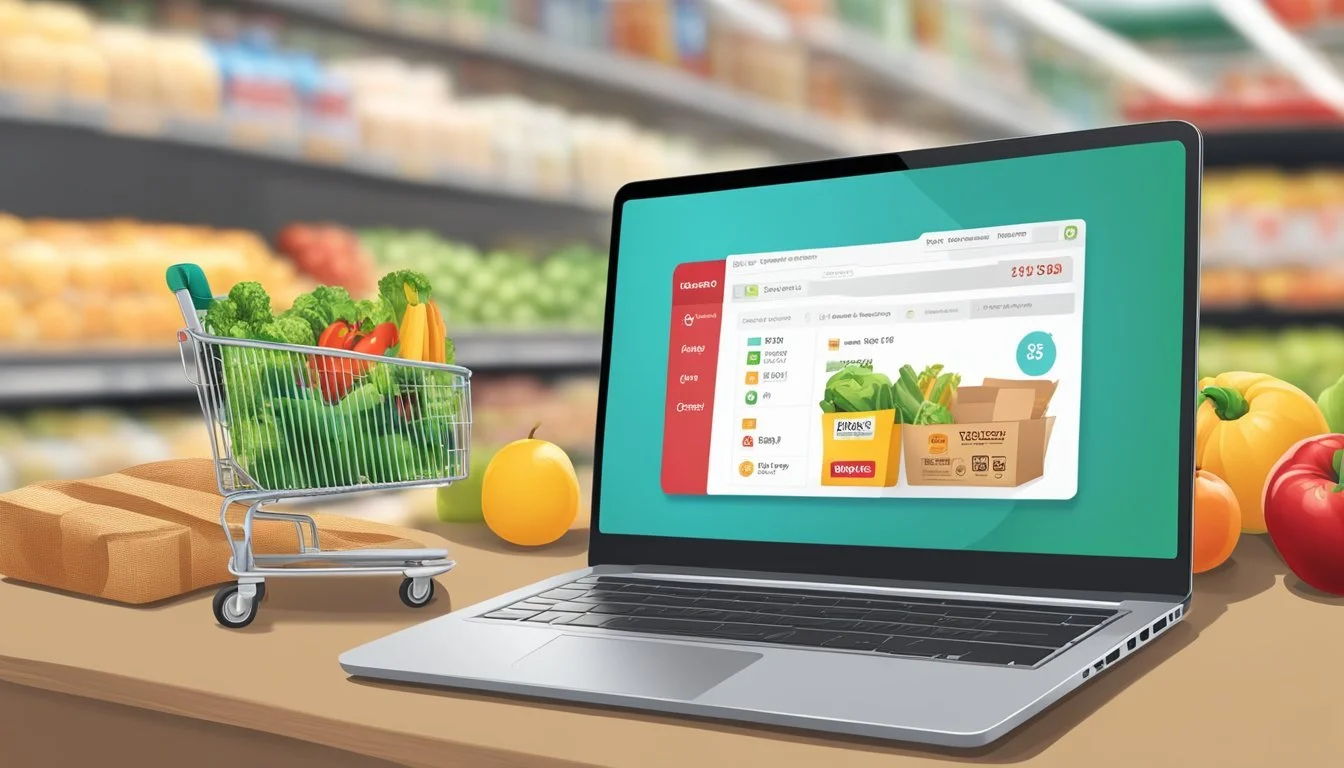Is Winn-Dixie Cheaper Than Hy-Vee?
A Clear Cost Comparison
Part of Our Grocery Store Guide with Details on Winn-Dixie Prices and Hy-Vee Prices
Comparing grocery store prices can be a complex task, given the myriad factors that influence costs across different regions and store chains. Winn-Dixie and Hy-Vee are two prominent players in the American grocery marketplace, with Winn-Dixie having a strong presence primarily in the Southern United States, and Hy-Vee serving customers mainly in the Midwest. Considering shopping habits and budget constraints, consumers often wonder whether Winn-Dixie is cheaper than Hy-Vee.
Evaluating their pricing involves looking at a range of products, from branded items to store-label goods. According to market reports, Winn-Dixie has been known to offer competitive pricing, particularly on its store-brand products called SE Grocers, which are recognized for maintaining a balance between quality and affordability. Meanwhile, Hy-Vee, with its customer-centric approach, emphasizes variety and quality, factors that might affect its pricing structure and offers. However, an all-encompassing conclusion on pricing cannot be determined without considering geographic discrepancies, current market trends, and the frequency of promotions and discounts each chain provides.
Since pricing is dynamic and can be affected by local competition, seasonal availability of produce, and the consumer’s preference for specific brands or product types, customers' experiences may vary. It is essential for consumers to periodically review their shopping patterns and local store prices to determine which grocery store is the most budget-friendly for their particular needs.
Overview of Supermarket Pricing
Supermarket pricing is a complex system influenced by numerous factors and strategies. These elements work together to determine the value proposition offered to customers.
Understanding Grocery Store Pricing Strategies
Grocery stores implement a variety of pricing strategies to attract and retain customers. The Everyday Low Price (EDLP) strategy aims to consistently offer goods at low prices, building customer trust that they do not need to wait for sales to get the best value. Alternatively, some stores utilize High/Low pricing, which involves higher everyday prices paired with frequent promotions and sales, capitalizing on customers’ attraction to perceived deals.
Factors Influencing Prices At Supermarkets
Several factors influence the prices at supermarkets:
Cost of goods: The base price of products depends on the cost at which the supermarket acquires them from suppliers.
Operational Costs: Expenses related to running the store, like rent, utilities, and labor, are factored into pricing.
Competition: Nearby competition can affect a store's pricing approach, where supermarkets may adjust costs to ensure they are competitive.
Category dynamics: Some categories, such as staple goods, tend to have lower margins and therefore might be priced more competitively than luxury or specialty items.
Consumer demand: Products with higher demand may see price variations based on seasonal trends or scarcity.
Reports and surveys: Data from market reports and consumer surveys may lead supermarkets to adjust prices to better align with customer expectations and spending habits.
A survey might show differing customer preferences, causing a supermarket to adapt its strategy. In the case of Winn-Dixie versus Hy-Vee, the decision on where one might find lower prices can depend on these and other market-driven considerations.
Brand Comparisons and Market Presence
When analyzing the cost-effectiveness between Winn-Dixie and Hy-Vee, it's essential to examine their brand strategies and how they are perceived in the retail space.
National Brands Versus Store Brands
Winn-Dixie and Hy-Vee, like many grocery stores, offer a mix of national brands and their store brands which are often seen as a more cost-effective alternative to name brand products. Winn-Dixie markets its SE Grocers label as comparable in quality to national brands while being around 20% cheaper, a claim that aligns with consumer expectation of store brands providing better value for money. Hy-Vee's private label offerings, although not mentioned in the snippet, likely provide similar value based on industry trends. Major retailers such as Walmart with its Great Value line, Kroger, and Publix also offer competitive store brands like Kirkland Signature at Costco.
Market Presence and Consumer Perception of Stores
Regarding market presence, Hy-Vee is predominantly found in the Midwest, while Winn-Dixie has a significant presence in the Southern states. These regional footprints impact the perception of each store's brand. The presence of stores like Aldi and Lidl in the U.S. with their heavy emphasis on store brands has likely influenced market expectations, with consumers often perceiving store brands like Winn-Dixie's SE Grocers to provide better value. Other competitors such as Whole Foods, now under Amazon's umbrella, cater to a different segment of the market focused on organic and premium products, ultimately affecting how shoppers perceive value at Whole Foods compared to stores like Winn-Dixie and Hy-Vee. Retailers such as Target and Trader Joe's also shape consumer expectations by offering a variety of store branded goods that promise quality at a reduced cost, which in turn pressures traditional grocery chains to maintain competitive pricing and brand quality.
Product Selection and Quality
When comparing Winn-Dixie and Hy-Vee in terms of product selection and quality, customers will find that both stores offer a range of fresh produce, meats, and various product categories. Each chain has its emphasis on offering quality goods, including organic options, to cater to health-conscious consumers.
Assessing the Freshness of Produce and Meat
Both Winn-Dixie and Hy-Vee take the freshness of their produce and meat seriously. Winn-Dixie sources a variety of fresh fruits and vegetables, ensuring that they meet specific quality standards. Meat at Winn-Dixie is selected based on strict freshness criteria, maintaining a reputation for providing customers with high-quality options for their dietary needs.
Hy-Vee also focuses on the quality of its meat and produce. Meat departments take pride in offering a selection of prime cuts that are both fresh and high-quality. Their produce sections are stocked with a range of fresh vegetables and fruits, including organic products for consumers who prefer food grown without synthetic pesticides or fertilizers.
Variety and Availability of Different Product Categories
In terms of variety, Winn-Dixie boasts a wide array of product categories. From baked goods like white sandwich bread to a diverse cheese selection, shoppers find both name brand and store brand options. The store brand, SE Grocers, often provides comparable taste and quality to national brands at reduced prices.
Hy-Vee distinguishes itself with an extensive variety of organic foods and dairy products. The chain caters to health-conscious consumers by supplying a broad array of organic products, including specialty bread and baked goods. Customers can typically find everything they need, ranging from staple pantry items to more exotic ingredients.
Both stores strive to ensure the availability of a wide range of products, serving their customers' varied tastes and preferences. While prices may vary, quality and variety are prioritized to deliver a satisfying shopping experience.
Pricing Analysis
In evaluating the affordability of grocery shopping, consumers often look for stores that offer the best value for their money. This section provides a meticulous comparison of Winn-Dixie and Hy-Vee prices, exploring how cost-effectiveness varies between these popular retailers.
Comparison of Winn-Dixie and Hy-Vee Prices
Item Winn-Dixie Price Hy-Vee Price Staple Goods Generally 20% cheaper than national brands Not the lowest prices Milk - $3.19/gal Eggs - $1.69/doz SE Grocers Products Typically 20% cheaper than comparable products -
Winn-Dixie often offers competitive pricing, frequently around 20% cheaper compared to national brands, particularly on its SE Grocers line. Although specific product prices at Winn-Dixie were not detailed in the results, Hy-Vee's pricing for staples like milk and eggs is provided, showcasing that while they provide a wide variety, they may not be known for the lowest prices.
Evaluating Cost-Effectiveness of Shopping Options
When considering the overall value provided by each store, price is a key factor but not the only consideration. Shoppers evaluate cost-effectiveness to include not only the sticker price but also factors such as product variety, quality, and customer service. Winn-Dixie is reported to be generally more affordable while offering a taste and quality comparable to national brands. This affordability can be especially significant in everyday items such as bread and raw chicken. On the other hand, Hy-Vee is recognized for its wide selection, which may imply a cost for diversity over the lowest pricing strategy.
The cost-effectiveness of a grocery store greatly hinges on a consumer’s individual needs and shopping habits. If one prioritizes lower prices on staple goods, Winn-Dixie may be the preferred option, while Hy-Vee might appeal to those seeking variety and potentially higher-quality goods even if it means slightly higher prices on certain items.
Shopping Experience and Services
The shopping experience and services at grocery shops hinge on store layout, customer convenience, and the quality of customer service. These factors contribute significantly to overall customer satisfaction and are key differentiators for retailers.
Store Layout and Shopping Convenience
Winn-Dixie and Hy-Vee both focus on the layout of their stores to enhance the shopping convenience for their customers. Cleanliness and organization are crucial, with aisles marked for easy navigation. Winn-Dixie's strategy often includes clear signage and grouping similar items together to facilitate a more efficient shopping trip. In comparison, Hy-Vee leverages its spacious layout to accommodate a broad range of products, aiming to provide a one-stop shop for consumers.
Customer Service and Satisfaction
The level of customer service is a pivotal aspect of the customer experience. Winn-Dixie has a customer feedback system geared towards improving service and tends to offer cost-effective alternatives under its SE Grocers brand. Hy-Vee is renowned for providing a satisfactory shopping environment, ensuring staff are available and responsive to customer needs. Both retailers invest in training employees to maintain high standards of customer service, which is evidenced by the positive customer feedback they typically receive.
Special Offers and Discounts
In exploring the cost-saving opportunities at Winn-Dixie and Hy-Vee, customers should pay particular attention to each store's sales and discount policies, as well as their loyalty programs, which are designed to help shoppers save money.
Analyzing Sales and Discount Policies
Winn-Dixie is known for its regular discounts, especially on store brand items. These items are usually priced lower than national brands, which allows shoppers to save money without compromising on quality. The frequency and variety of sales means that customers have ample opportunities to purchase goods at reduced costs.
Hy-Vee's approach includes Fuel Saver + Perks®, a program that offers savings on fuel based on in-store purchases. This allows customers to benefit from dual savings – on their grocery bills and at the gas station. Furthermore, Hy-Vee occasionally provides bonus rewards, elevating the savings potential during these promotional periods.
Loyalty Programs and Member Savings
Winn-Dixie extends cost-saving mechanisms via their loyalty program, offering exclusive deals to members. Through this, customers are presented with special promotions that may not be available to non-members.
On the other hand, Hy-Vee rewards its shoppers through the Fuel Saver + Perks® program mentioned earlier. This extends beyond immediate savings to include potential bonus rewards, enhancing the value for regular customers. Shoppers earn discounts on fuel purchases by buying certain grocery items, iterating that loyalty at Hy-Vee can pay off at both the supermarket and the gas station.
Both stores showcase a commitment to providing value through their respective special offers and discounts. While Winn-Dixie focuses on direct in-store savings, Hy-Vee places an emphasis on combined savings, linking grocery purchases with fuel discounts.
Location and Accessibility
When comparing Winn-Dixie and Hy-Vee in terms of location and accessibility, one must consider their presence in the United States and the regional focus of their stores.
Access to Supermarket Locations
Winn-Dixie primarily operates in the southeastern United States, with a strong presence in states like Florida, Georgia, Alabama, and Louisiana. They cater to shoppers in this region providing convenient access to communities in these areas. Hy-Vee, on the other hand, has its roots in the Midwest, with a significant number of stores in states such as Iowa, Illinois, Missouri, Kansas, Minnesota, Nebraska, and South Dakota.
Both Winn-Dixie and Hy-Vee serve as regional stores, and their accessibility is influenced by their geographical concentration. The store locations are strategically situated to serve the local demographics, aiming to provide easy access to a full range of supermarket amenities.
Online Shopping and Grocery Delivery
The landscape of grocery shopping has evolved with the option to purchase goods online and have them delivered, a service provided by many supermarket chains, including Winn-Dixie and Hy-Vee. This convenience is reshaping the way consumers approach grocery shopping and offers insights into modern consumer behavior.
E-commerce and Online Grocery Trends
Online grocery shopping has witnessed a substantial rise, driven by factors such as increased internet penetration, advancements in e-commerce technology, and changes in consumer buying habits. Supermarkets have had to adapt by offering online shopping platforms with various features like user-friendly interfaces, live inventory updates, and personalized shopping experiences. Services like Amazon Fresh have further disrupted the market, setting high expectations for timely deliveries and broad product assortments.
Comparing Online Options of Supermarket Chains
Winn-Dixie provides its customers with the ability to shop online for groceries, with options for both delivery and curbside pickup. They highlight the convenience of same-day delivery, sometimes in as little as two hours, and emphasize the saving of time and money.
Delivery Services:
Same-day delivery available
Curbside pickup options
Hy-Vee, on the other hand, offers a similar range of services for online shopping. They compete by offering their own perks and incentives to attract customers who prefer shopping from home.
Online Shopping Perks:
Exclusive online promotions
Membership benefits for repeat customers
Both chains have their own approaches to marrying the in-store experience with the digital world, competing not only with each other but also with giants like Amazon, which has established Amazon Fresh as a robust competitor in the online grocery delivery space.
Consumer Behavior and Trends
Understanding consumer preferences is becoming increasingly central for retailers, especially grocery stores and supermarkets, to stay competitive. These preferences include a greater emphasis on factors like the availability of healthy options and the overall customer experience.
Impact of Consumer Preferences on Retailers
Healthy Options: In recent years, there has been a palpable shift towards health-conscious buying. Consumers are showing a strong preference for items such as organic produce, grass-fed meats, and non-GMO products. Supermarkets that offer a diverse range of such healthy options are more likely to attract and retain customers.
Customer Experience: The in-store experience plays a critical role in how consumers perceive grocery stores. Factors like cleanliness, helpful staff, and easy navigation through aisles can significantly influence their shopping decisions. Retailers who invest in enhancing the customer experience may see a positive impact on their loyalty and sales.
Retailers like Winn-Dixie and Hy-Vee must adapt to these consumer behavior trends to meet evolving expectations and maintain their market positions. They must strategically select merchandise that aligns with the health preferences of their customers and consistently deliver high-quality in-store experiences.
Conclusion
When determining whether Winn-Dixie is cheaper than Hy-Vee, it is essential to consider a variety of factors, including regional pricing variations and differing product lines. Pricing comparisons indicate that Winn-Dixie often positions itself as a cost-effective option, offering competitive pricing on everyday items like sandwich bread and raw chicken, purportedly matching or surpassing national brands in both taste and quality.
Importantly, consumers have also noted that Winn-Dixie's private label, SE Grocers, generally provides goods at approximately 20% less cost than comparable national brands. This can lead to significant savings for shoppers who prioritize value.
In contrast, while Hy-Vee has a reputable presence in its regions of operation, specific data regarding its pricing in comparison to Winn-Dixie is less prominently reported in the search results. Hy-Vee's strong regional footprint contributes to its brand recognition and loyalty, which can factor into its pricing strategy.
Considering the provided data, Winn-Dixie appears to have an edge in offering lower prices on certain items, thus attracting cost-conscious consumers. However, shoppers should also account for local variation, the depth of product assortments, and potential differences in shopping experiences between the two retailers. As such, the decision of which store is cheaper will likely depend on an individual's specific shopping needs and location.


